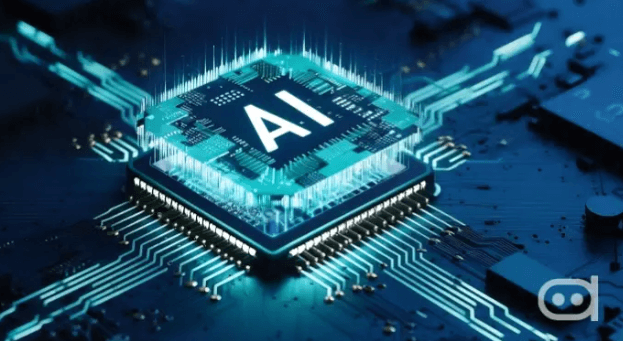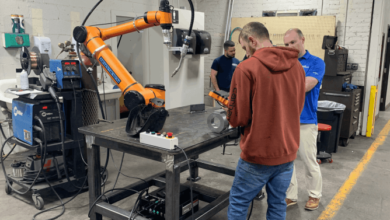A New Era of Chip Design: Generative AI Takes the Lead at Computex

The world of semiconductor design is about to be revolutionized. As Computex, the most awaited and prestigious technology trade show, goes underway, a new star has taken centre stage: generative AI. This new technology will change the vlsi circuit and chip design landscape by being able to produce innovation much faster and achieve better efficiency, as well as unprecedented complexity for the architecture.
- The Future of AI in Semiconductor Design
Generative AI has traversed many domains, from art and music to coding. Today, we are at the threshold of harnessing them in designing complex VLSI hardware. This is a very critical juncture since the pressure to produce powerful and energy-efficient chips is surging exponentially in areas of mobile computing, automotive, and IoT.
One of the most exciting uses of generative AI is for circuit optimisation in chip design. VLSI circuits involve some of the most complex systems of integrated circuits. However, designing such massive, intricate systems invariably involves a lot of time-consuming trial and error. But through AI, the same amount of data from earlier designs can be analysed to detect patterns and generate optimised circuit layouts in a matter of minutes.
These AI systems can include many parameters all at once—including power consumption, heat dissipation, and performance metrics—to create designs that really stretch the limits of semiconductor technology. This level of optimisation begins to grow in importance as we approach the physical limits of Moore’s Law, where innovative approaches must be found to continue advancing capabilities in chips.
- Streamlining the Design Process
Just like an improvement in the final outcome, generative AI is totally transforming the entire design process. Using AI, many repetitive and time-consuming tasks needed to create the chips are automated, giving engineers more elbow room to focus on the more creative and strategic part of their work. That could be very rewarding for companies specialising in semiconductor design, letting them bring products into the market much faster and more efficiently.
AI-assisted tools can generate and review a large amount of design options in a matter of minutes. This enables engineers to have an open option pool from which to select for a problem in question. The faster one can prototype reduces the time and effort required for new chip designs, so one can look to expect this will result in more frequent product releases and faster acceleration in technology.
See also: How Can Security and Threat Protection Be Improved by Application Hardening and AppSealing?
- Clearing the barriers to complex design issues
Generative AI can be a breath of fresh air when solving this problem, as the complexity of the chip designs grows with time and makes the limits of classical problem-solving techniques. AI can make use of such machine learning algorithms to find novel solutions that human designers might not.
For instance, in the field of vlsi hardware design, AI may optimise layouts to suit particular use cases, such as mobile low-power or data centre high-performance computing. Such tailored design leads to huge efficiencies both in energy usage as well as overall performance, addressing much of the most pressing concerns in modern computing.
- Human-AI Collaboration
Although generative AI indeed is a powerful technology, it neither replaces nor enhances human designers’ abilities and also creates a new generation of human/AI collaboration in the field of semiconductor design. Engineers can use the designs of the AI, which work as starting points for further refinements and enhancements on their part.
This interactive approach combines then the creativity and intuition of human designers with the computation power and abilities in pattern recognition that AI can offer. And what can eventually result from it is an amalgamation that stretches the limits of what can be accomplished in chip design, coming up with innovations that no human nor machine could do alone.
- Implications for the Semiconductor Industry
For the semiconductor industry in general, this penetration of generative AI in the design of chips would have very strong, long-term implications. Old semiconductor design company will benefit from innovation as it takes place in a streamlined and cost-effective manner. For newcomers to the field, there is a reduction in barriers with AI-based tools—an increase, subsequently, in competition and diversity.
Further, rapid prototyping and iteration in the design can result in more specialised chips for more specific applications. This way of customisation might change the industry perspective from having a general-purpose processor to a mix of ASICs.
- Challenges
Although potentially huge, the promise of generative AI in chip design by no means comes without challenges. Reliability and security of designs from AI will be critical, especially in applications where the failure of a chip can have such a serious consequence. There will be a need for intensive testing and validation processes to validate the integrity of the designs supported by AI.
Moreover, questions of intellectual property rights and the potential risk of AI unwittingly replicating patented designs will join the legal and ethical taboos that the industry will have to navigate as the technology develops.
- The Future of Chip Design
As such generative AIs evolve, one expects that VLSI circuit and hardware design will increase exponentially. Later versions of such technology may be able to not only optimise existing paradigms in design but could also discover wholly new architectures that are currently beyond existing limitations.
Conclusion
Integration of generative AI into chip design is a new era in semiconductor technology. It has been vividly exhibited in Computex, where the mighty tool promises to change the face of VLSI hardware design from the conceptualisation stage to final production. Efficiency gain, prompt innovation, and handling complex designs are factors that these advancements in AI have helped bring out in product design and improve these limitations of traditional design methods for the industry.
For companies working on designing semiconductors, this is no longer an option; it is a necessity to compete in this ever-changing environment. The coupling of human expertise with the capabilities of AI promises to unlock unprecedented levels of innovation, which will potentially make the breakthrough for shaping the computing future. The depth of innovation shown at Computex promises to be an exciting new chapter in the development of semiconductor technology.




